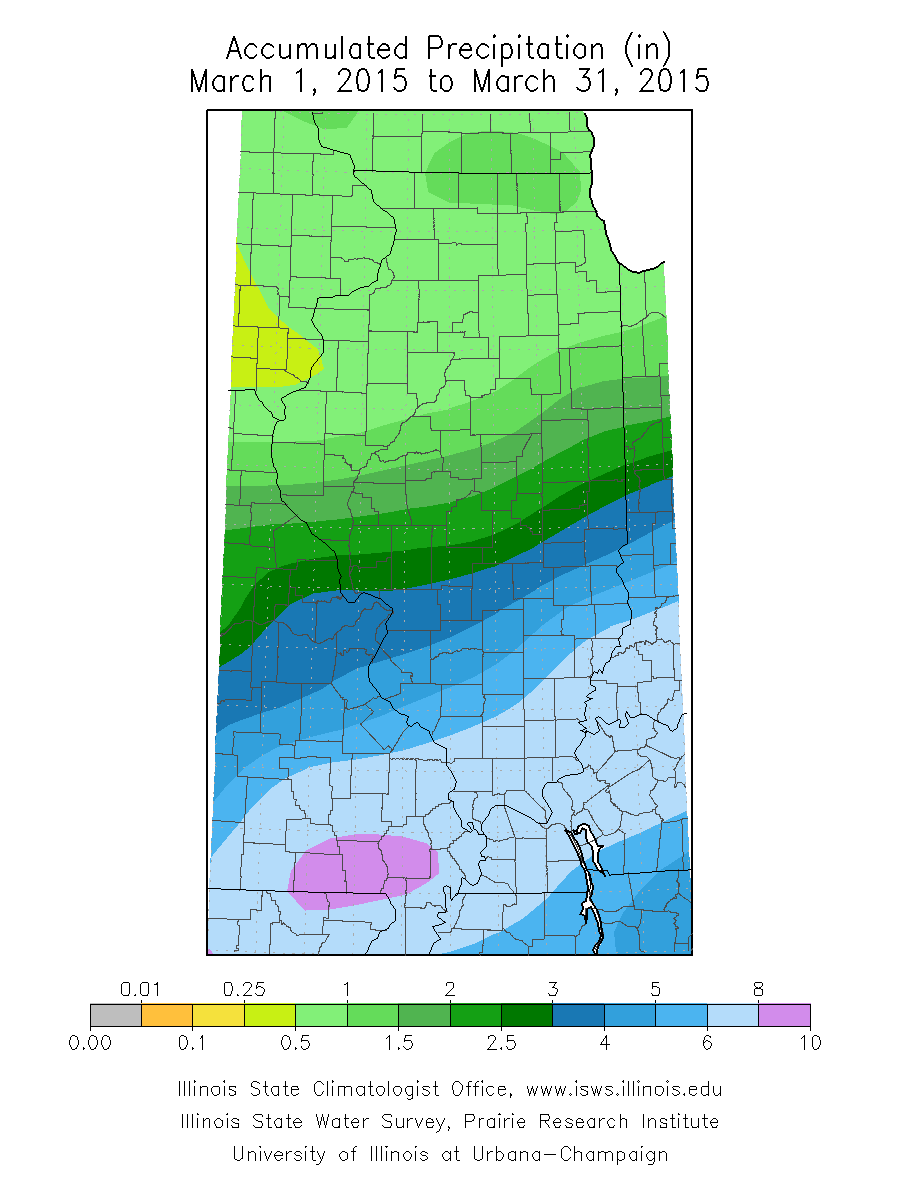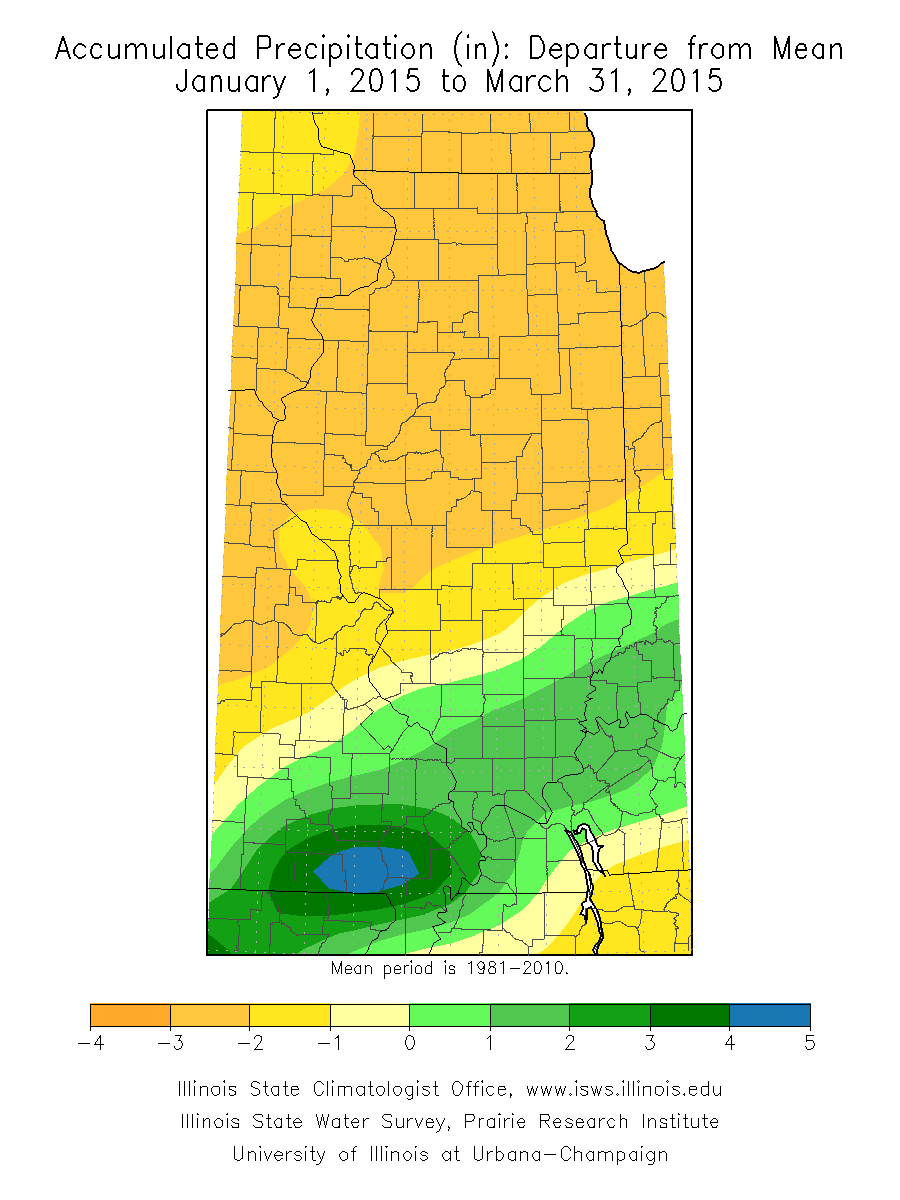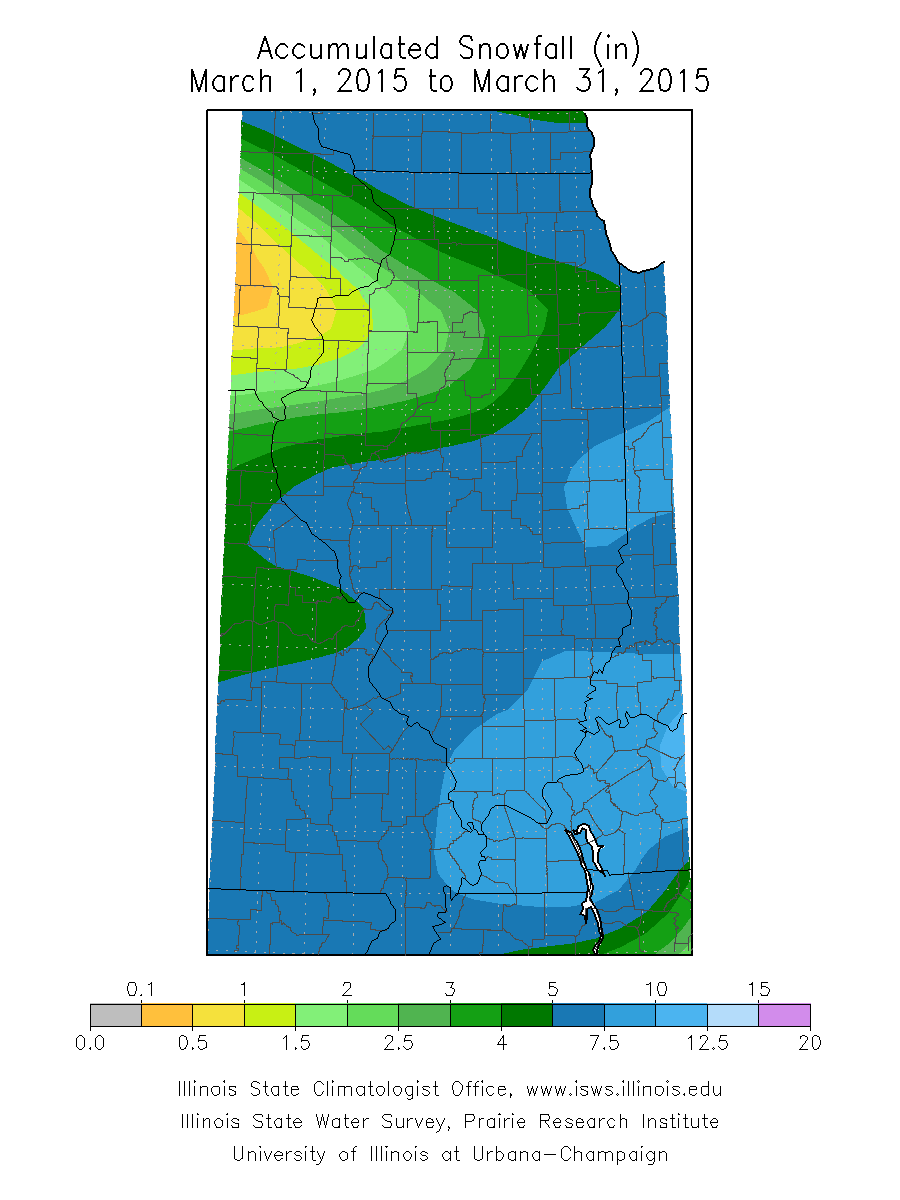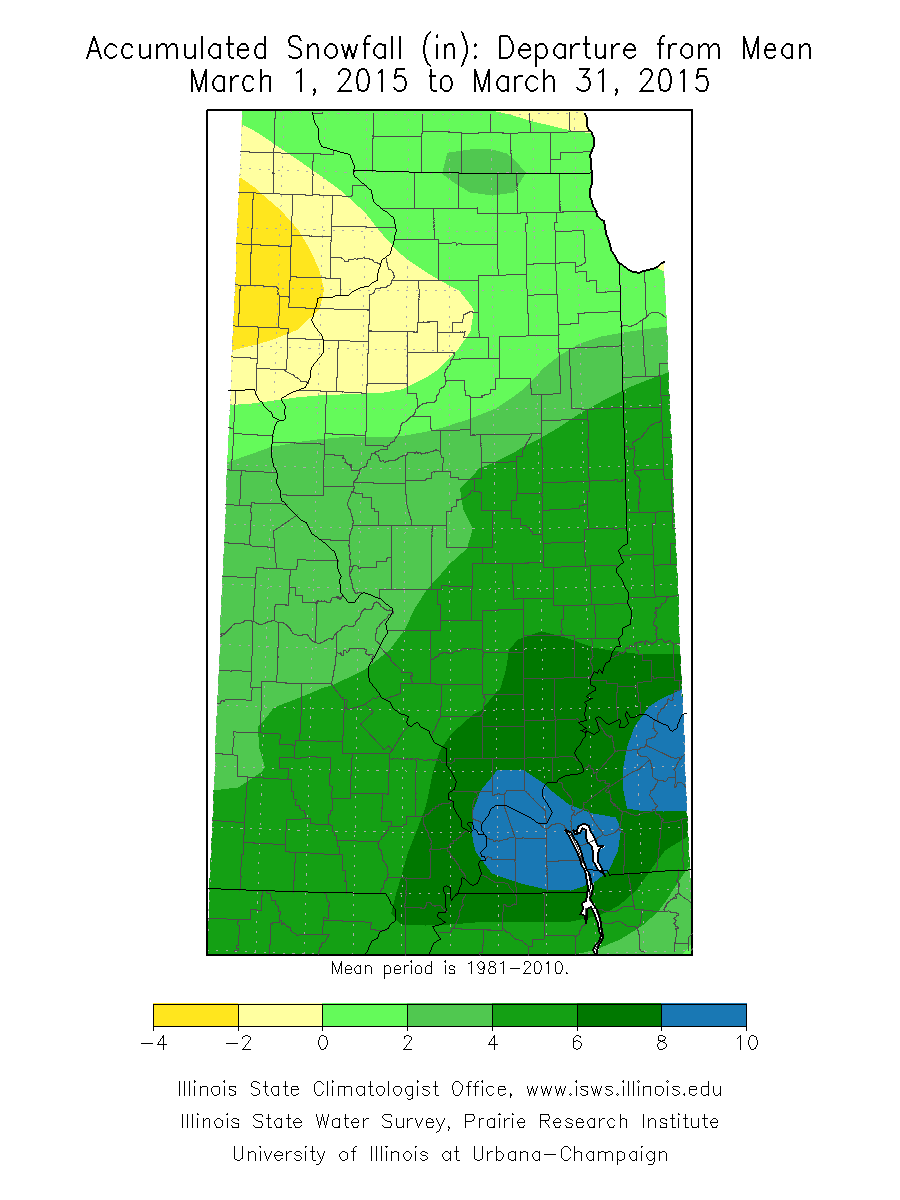Temperature
The statewide average temperature for March was 38.2 degrees, 3.1 degrees below average. This follows on the heels of a slightly colder-than-average January and much colder-than-average February. As a result, the year-to-date temperature for Illinois was 27.8 degrees, 5.1 degrees below average and the 16th coldest on record. In comparison, the same period in 2014 was 24.4 degrees and the 4th coldest on record.
According to the latest NWS forecasts, the first two weeks of April are expected to be warmer-than-average.
Precipitation

The statewide precipitation for March was 2.44 inches, 0.52 inches below average. However, it was not evenly distributed (left). Northern Illinois was dry with less than 2 inches of precipitation in many locations. Central Illinois was close to average with 2 to 4 inches widely reported. On the other hand, Southern Illinois was much wetter with 4 to 8 inches of precipitation (shades of blue). The largest reported total for the month was in Belknap (far southern Illinois) with 8.43 inches.
The heavy rains in southern Illinois contributed to moderate flooding on tributaries of the Wabash and Ohio Rivers.

The statewide average precipitation for January-March was 5.31 inches, 1.78 inches below average and the 29th driest on record (right). While northern and central Illinois were 1 to 3 inches below average (shades of yellow), southern Illinois was 1 to 4 inches above average on precipitation (shades of green).
As noted yesterday, dry conditions extend across the upper Corn Belt. In the short-term, dry conditions can be beneficial for spring planting as the soils dry out and warm up faster.
By the way, precipitation is the rainfall total plus the water content of any snow.
Snowfall

Snowfall in March was widespread across the state(left). Interestingly, some of the highest snowfall totals were in southern Illinois where climatology indicates it should be the least. The largest snowfall total was reported in Danville (east-central Illinois) with 12.3 inches, followed by Grand Chain Dam with 10.0 inches (far southern Illinois). The lowest monthly totals came out of northwest Illinois. The Moline airport reported only 0.1 inches of snow for the month.

As a result, snowfall was above-average for most of the state (right) except the northwest near the Quad Cities. You may notice that much of central and northern Illinois received above-average snowfall but still remained below-average on precipitation. While those areas received plenty of snow, they received little rainfall which typically makes up the bulk of the precipitation for March.

